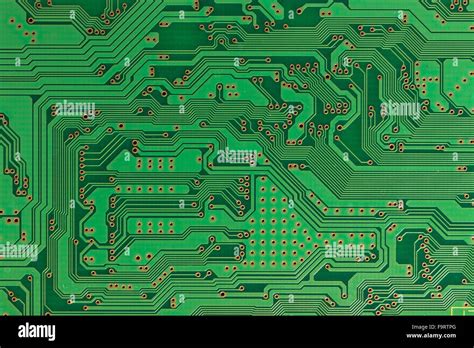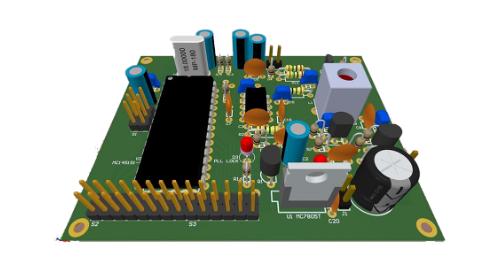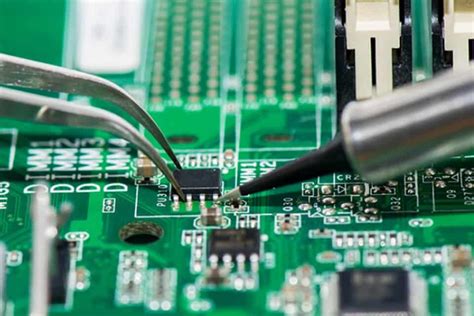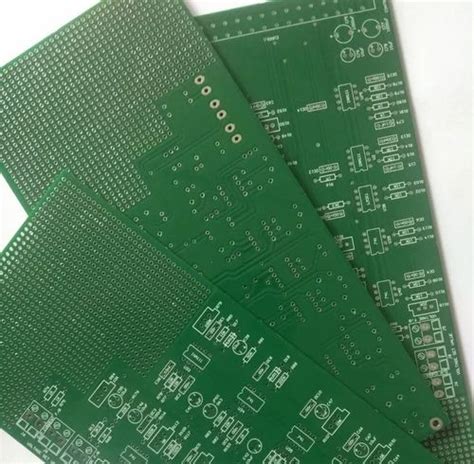What are the quality problems of PCB? How to improve and enhance it?
1.PCB
The creator of PCB is Austrian Paul Eisler. In 1936, he first used printed circuit boards in radios. In 1943, Americans mostly used this technology in military radios. In 1948, the United States officially recognized this invention for commercial use. Since the mid-1950s, printed circuit boards have been widely used. Printed circuit boards appear in almost every electronic device. If there are electronic parts in a certain device, they are also embedded in PCBs of various sizes. The main function of PCB is to connect various electronic components to form a predetermined circuit, play the role of relay transmission, and is a key electronic interconnection part of electronic products. It is known as the “mother of electronic products”.
PCB can be divided into rigid circuit boards, flexible circuit boards, and soft-hard boards. The PCB shown in the first picture below is generally called rigid (Rig id)PCB, the yellow connection line in the second picture is called flexible (or flexible) PCB. The intuitive difference between rigid PCB and flexible PCB is that flexible PCB can be bent. Common thicknesses of rigid PCB are 0.2mm, 0.4mm, 0.6mm, 0.8mm, 1.0mm, 1.2mm, 1.6mm, 2.0mm, etc. The common thickness of flexible PCB is 0.2mm. A thickening layer will be added behind the parts to be soldered. The thickness of the thickening layer varies from 0.2mm to 0.4mm. The purpose of understanding these is to provide structural engineers with a spatial reference when designing. Common materials for rigid PCBs include: phenolic paper laminate, epoxy paper laminate, polyester glass felt laminate, epoxy glass cloth laminate ﹔Common materials for flexible PCBs include: polyester film, polyimide film, fluorinated ethylene propylene film.
2.What are the quality problems of PCBs? How to improve and enhance them?
3.Poor solderability
Solderability is also one of the more serious problems, especially batch problems. The possible causes are board surface pollution, oxidation, black nickel, abnormal nickel thickness, solder mask SCUM (shadow), long storage time, moisture absorption, solder mask on PAD, too thick (repair).
Pollution and moisture absorption problems are relatively easy to solve, while other problems are more troublesome, and there is no way to find them through incoming material inspection. At this time, it is necessary to pay attention to the process capabilities and quality control plans of the PCB board factory. For example, for black nickel, it is necessary to see whether the PCB factory outsources the chemical gold, whether the frequency of analyzing its own chemical gold wire solution is sufficient, whether the concentration is stable, whether regular gold stripping tests and phosphorus content tests are set up for detection, and whether the internal solderability test has good execution If all of these can be done well, the possibility of batch problems is very small. For poor PAD and repair on solder mask, it is necessary to understand the standards set by the PCB supplier for maintenance, whether the inspectors and maintenance personnel have a good assessment and post system, and clearly define that dense pad areas cannot be repaired (such as BGA and OFP).

4.Board bending and warping
The reasons that may cause board bending and warping include: supplier material selection problems, abnormal production process, poor rework control, improper transportation or storage, insufficient design of broken holes, and large differences in copper area of each layer. The last two design problems need to be avoided through design review in the early stage. At the same time, the PCB factory can be required to simulate the mounting conditions for testing to avoid the bad board bending after the furnace. For some boards, it can be required to pack the wood pulp board after pressing it up and down during packaging to avoid subsequent deformation. At the same time, a clamp is added during patching to prevent the device from bending the board due to excessive weight
5.Scratches and exposed copper
Scratches and exposed copper are the most challenging defects for the management system and execution of PCB factories. This problem is not serious, but it does bring quality concerns. Many PCB companies will say that this problem is difficult to improve. The editor has promoted the improvement of scratches in many PCB factories and found that many times it is not that the improvement is not good, but whether to change it and whether there is motivation to change it. All PCB factories that seriously promote the project have significantly improved the DPPM delivered.
6.Poor impedance
Impedance is an important indicator related to the RF performance of mobile phone boards. The common problem is that the impedance difference between PCB batches is relatively large. Since the impedance test strip is generally made on the large board edge of the PCB and will not be shipped with the board, the supplier can provide the impedance strip and test report of the batch for reference every time it ships, and also require the comparison data of the board edge wire diameter and the board inner wire diameter.
7.Solder mask blistering/peeling
This type of problem is usually caused by abnormal control of PCB solder mask process, or the selection of inappropriate solder mask ink (cheap, non-metallic gold ink, not suitable for mounting flux), or it may be that the temperature of mounting and reworking is too high. To prevent batch problems, PCB suppliers need to formulate corresponding reliability test requirements and control them at different stages.
8.Poor plugging
Poor plugging is mainly caused by insufficient technical capabilities of PCB factories or simplified processes, which is manifested as incomplete plugging, copper exposure or false copper exposure in the hole ring. It may cause insufficient solder, short circuit with the patch or assembled device, residual impurities in the hole, etc. This problem can be found by appearance inspection, so it can be controlled in the incoming material inspection, and the PCB factory is required to make improvements.







